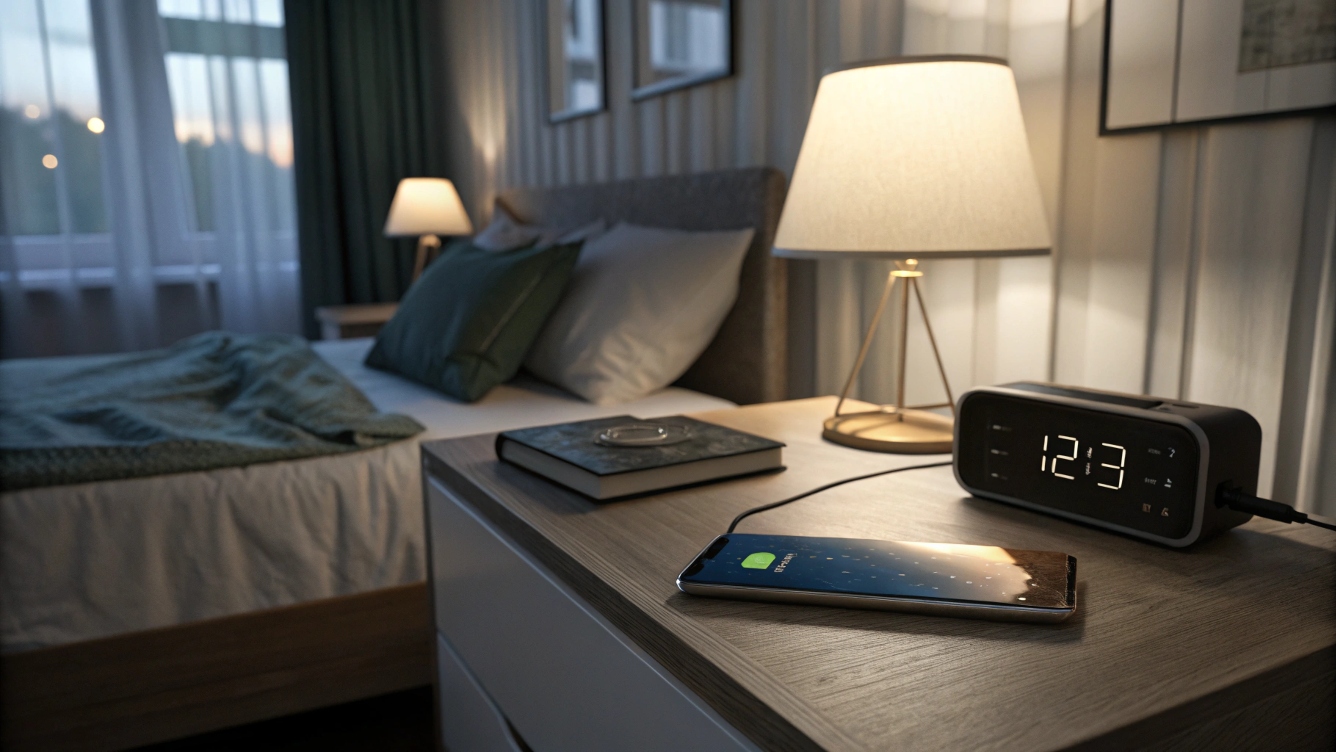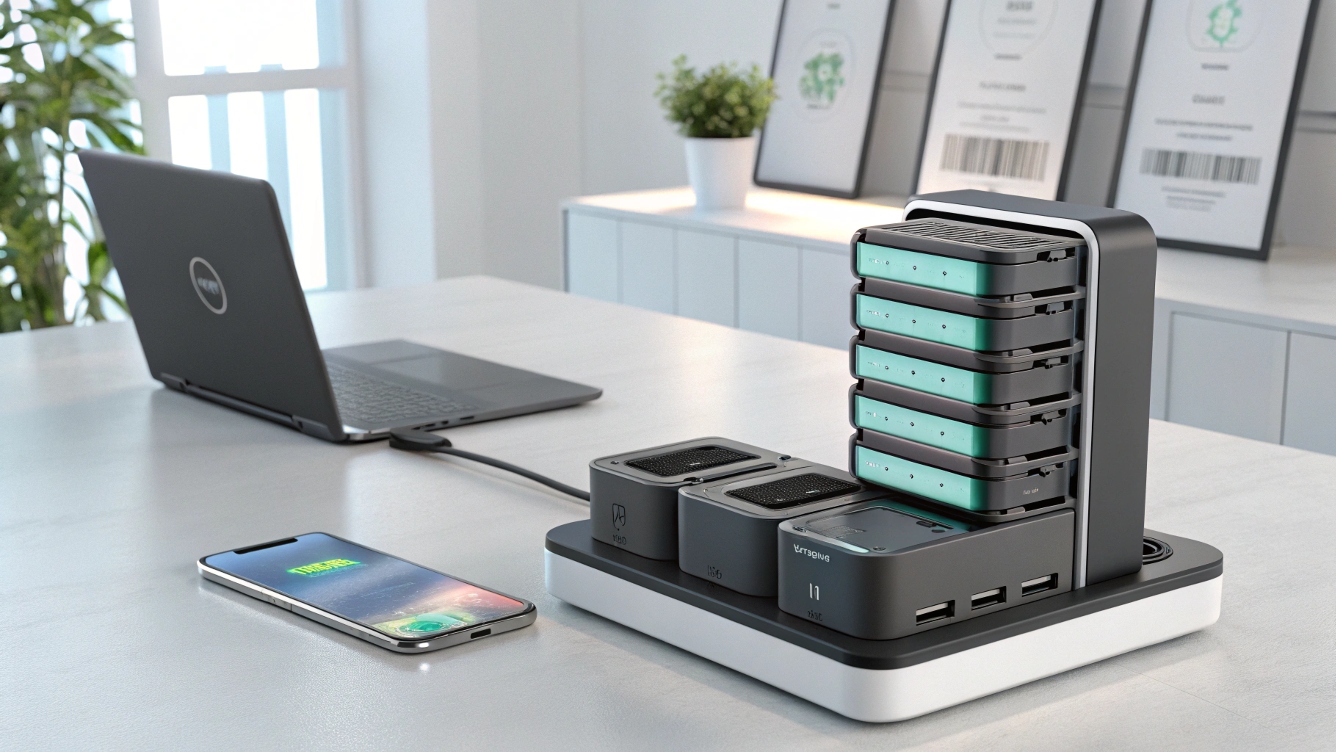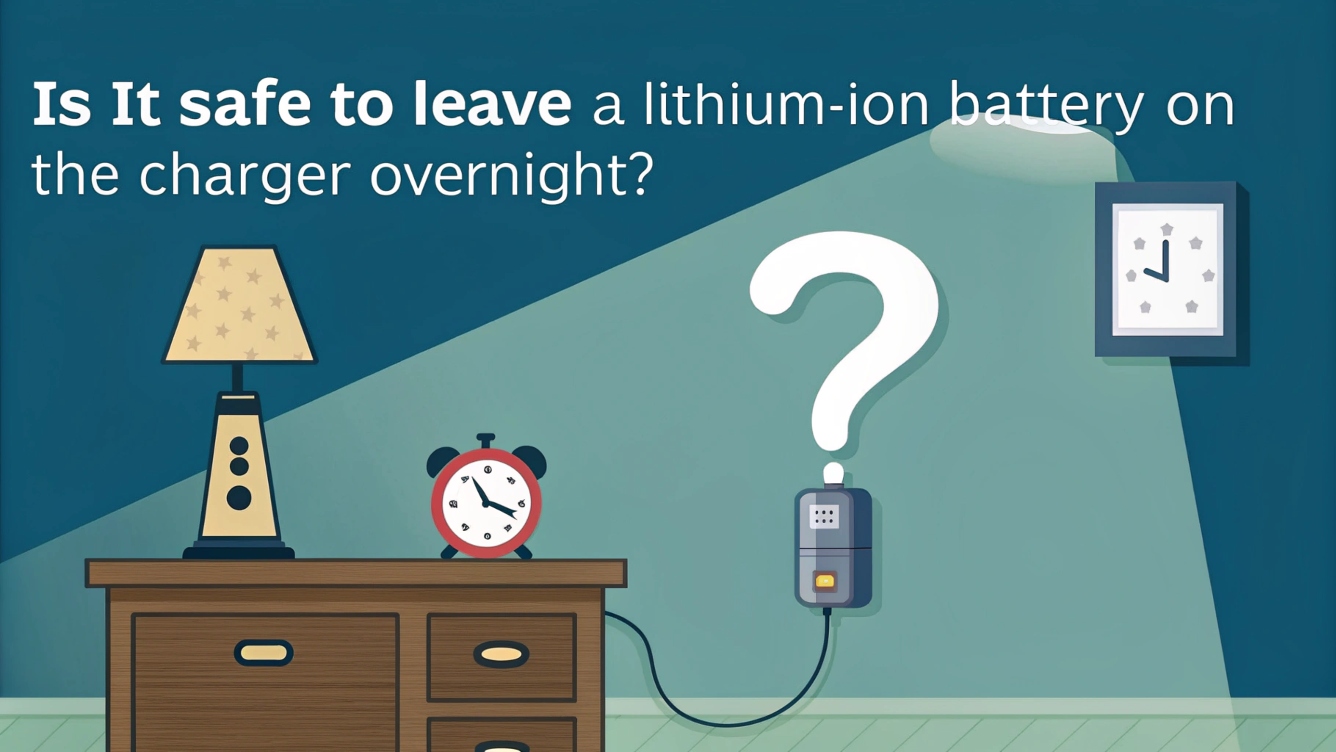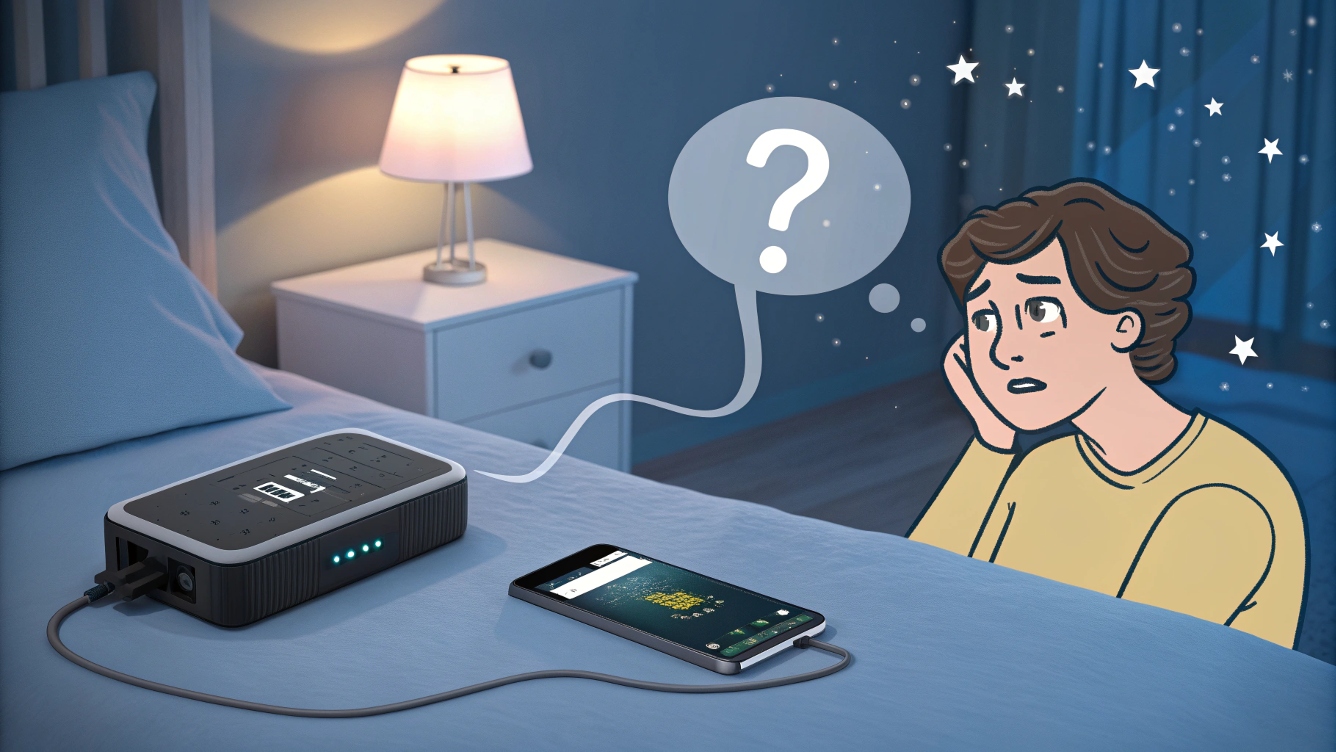É seguro deixar uma bateria de íon de lítio no carregador durante a noite?
Os riscos ocultos de cobrança noturna
Deixar baterias de íon de lítio no carregador durante a noite pode parecer conveniente, Mas pode acelerar o desgaste e representar riscos à segurança. Aqui está o porquê:
- Estresse sobrecarregando: Os carregadores modernos geralmente param de cobrar em 100%, Mas a cobrança de gotejamento para manter a capacidade total gera calor, degradando a bateria ao longo do tempo. Estudos mostram que cobranças completas frequentes reduzem a vida útil 20-30% comparado ao carregamento parcial:citar[2]:citar[3].
- Fuga térmica: A cobrança prolongada em áreas mal ventiladas aumenta os riscos de incêndio, especialmente com baterias danificadas ou falsificadas. Por exemplo, um inchado 18650 Célula esquerda carregando durante a noite pode atingir temperaturas superiores a 150 ° C:citar[1]:citar[4].
- Perda de capacidade: Células de íon de lítio armazenadas em 100% cobrança perde ~ 5% de capacidade mensalmente, contra 2% no 50% cobrar.
Para a ponta: Usar Baterias de lítio empilháveis (Como nossa série de energia modular com sistemas de gerenciamento de baterias embutidos (BMS) Para evitar a sobrecarga automaticamente.
Quando o carregamento noturno é (e não é) Aceitável
Cenários seguros
- Chargers inteligentes: Dispositivos com retirada automática (Por exemplo, iPhones, Veículos Tesla) pode ficar com segurança conectado.
- Dispositivos de baixa potência: Relógios ou aparelhos auditivos com pequenas baterias (<100mAh) gerar calor mínimo.
Situações de alto risco
- Carregadores baratos: Os carregadores não certificados carecem de regulamentação de tensão, Arriscar sobrecarregar.
- Baterias danificadas: Células inchadas ou perfuradas nunca devem ser carregadas sem vigilância:citar[1].
- Bateriaas DIY: Células desprotegidas (como solto 18650s) são propensos a fugitivos térmicos:citar[4].
5 Estratégias para carregar com segurança e estender a duração da bateria
1. Carregamento parcial (20-80% Regra)
Mantendo um 20-80% A faixa de carga reduz o estresse químico. Para 10kWh sistema de bateria empilhável, isso significa:
- Uso diário: Cobrar para 80% (8kwh utilizável).
- Modo de backup: Cobrar para 100% Somente antes de tempestades ou interrupções.
2. Use tecnologia de carregamento inteligente
Combinar baterias com MPPT Solar Chargers (por exemplo. GYCX Solar MPPT) Pro isso:
- Pare de cobrar nos níveis predefinidos (por exemplo. 80%).
- Ajustar as taxas com base na temperatura.
3. Controle de temperatura
- Alcance ideal: Carga a 15 ° C - 25 ° C. (59° F -77 ° F.).
- Evite extremos: O carregamento abaixo de 0 ° C causa revestimento de lítio; Acima de 45 ° C acelera a degradação:citar[2].
4. Sistemas de bateria modulares
Baterias de lítio empilháveis permitir:
- Distribuição de carga entre módulos para reduzir a tensão individual.
- Isolar unidades defeituosas sem tempo de inatividade do sistema.
5. Carregamento programado
Defina os temporizadores para carregar durante o horário mais frio da noite e parar em 80% de manhã.
Estudo de caso: Casas solares com Baterias de lítio empilháveis

Uma família do Texas usando nosso Kit solar fora da grade alcançou:
- 40% Vida mais longa: Limitando acusações a 85% via inversores programáveis.
- Segurança contra incêndio: Módulos de armazenamento em ventilação, gabinetes à prova de fogo.
- Economia de energia: Adicionando capacidade de forma incremental à medida que as necessidades cresciam.
Análise comparativa: Práticas de cobrança
| Prática | Nível de risco | Impacto de vida útil | Melhor para |
|---|---|---|---|
| Durante a noite (Inteligente) | Baixo | -10% | Dispositivos certificados |
| Durante a noite (Genérico) | Alto | -30% | Evitar |
| Parcial (20-80%) | Nenhum | +25% | Uso diário |
| Descarga total | Crítico | -50% | Nunca recomendado |
Dados sintetizados a partir de testes da indústria e Wikipedia: Envelhecimento da bateria de íons de lítio.
Prova de futuro com Armazenamento de energia modular
Atualizando para Baterias de lítio empilháveis ofertas:
- Escalabilidade: Comece com 5kWh, expanda para 20kWh conforme as necessidades crescem.
- Segurança: O BMS integrado monitora cada módulo para superaquecer ou sobrecarregar.
- Eficiência: Balance Charging entre os módulos para minimizar o desgaste.
Para a ponta: Combine com os gerentes de energia orientados a IA para prever padrões de uso e otimizar os horários de carregamento.
Perguntas frequentes: Respondendo a preocupações críticas
P: Posso deixar meu laptop conectado 24/7?
A: Sim, Se tiver um "economizador de bateria" modo que limita o carregamento em 80-90%.
P: E se eu precisar 100% cobrança por viagens?
A: Cobrar para o pleno antes da partida - cobrasciações ocupadas causam danos mínimos.
P: Como faço para monitorar a saúde da bateria?
A: Use habilitado para Bluetooth monitores de bateria (incluído em nosso Série Pro) Para rastrear tensão e ciclos.
Conclusão: Carga mais inteligente, Não mais

Embora ocasionalmente o carregamento noturno não destrua sua bateria, tornando -o um hábito diminui a vida útil e aumenta os riscos. Para usuários solares e entusiastas da tecnologia, Baterias de lítio empilháveis Emparelhado com a tecnologia de carregamento inteligente oferece uma oferta mais segura, solução mais duradoura.
PRÓXIMOS PASSOS:
- Explorar nosso Kits de bateria modulares para armazenamento escalável.
- Baixe nosso guia de segurança de carregamento para dicas de bricolage.
- Assista a uma demonstração para otimizar os ciclos de carga.
Referências
- Mecanismos de envelhecimento de íons de lítio: Wikipedia: Bateria de íon de lítio.
- Riscos de fuga térmica: Wikipedia: Fogo da bateria de lítio.
- Dados do ciclo de carga: Relatórios da indústria da Battery University.



